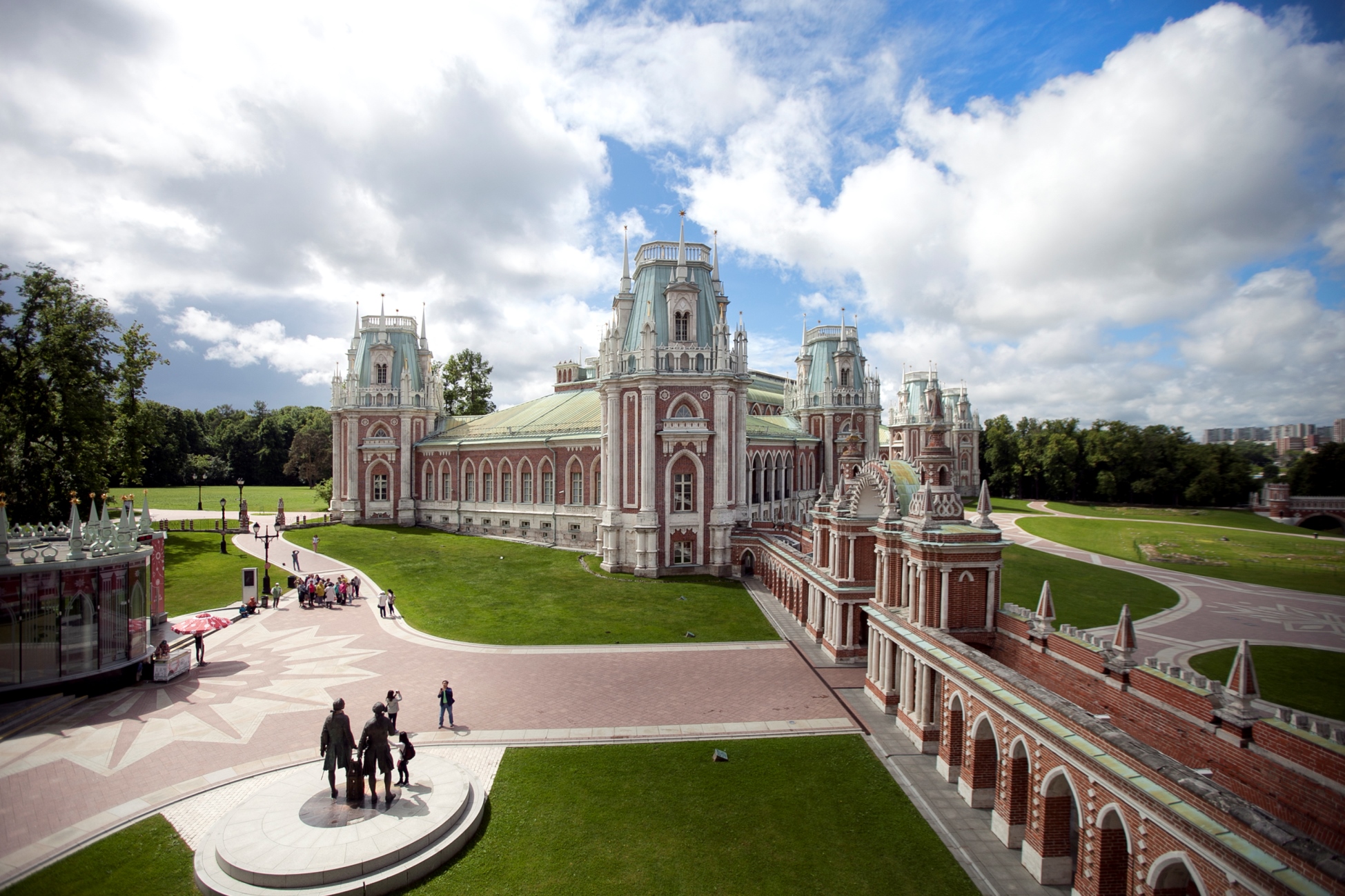Grand Palace
In 1785 Empress Catherine II visited Tsaritsyno to see her almost finished suburban residence. She left dissatisfied, because the halls seemed too small and the ceilings too low. Catherine ordered to raze the Main Building to the ground and start over. Court architect Vasily Bazhenov was dismissed while his student Matvey Kazakov was entrusted with preparation of a new plan.
At the site of the disassembled building, Kazakov erected a new palace with a tall central gallery, a symbol of the greatness and the might of the Russian Empress. Compared to Bazhenov’s creation, the new palace had more Gothic details – which was the original desire of Catherine – pointed towers, raised arches and lancet windows. At the same time, the Grand Palace is a monument of Russian classicism in architecture thanks to its balanced and harmonious proportions.
By 1796 the Grand Palace was almost completed. Only the roof was temporary, without decorative elements. The walls were already being painted when Catherine II suddenly died. All the works in Tsaritsyno were stopped.
By the end of the 20th century, the Grand Palace became gloomy ruins. Even during the large-scale restoration of Tsaritsyno in the 1980s, Polish and Soviet specialists stayed away from this building. Grand Palace reconstruction started only in 2005. In two years the ruined palace was transformed into a modern museum within antique walls.

